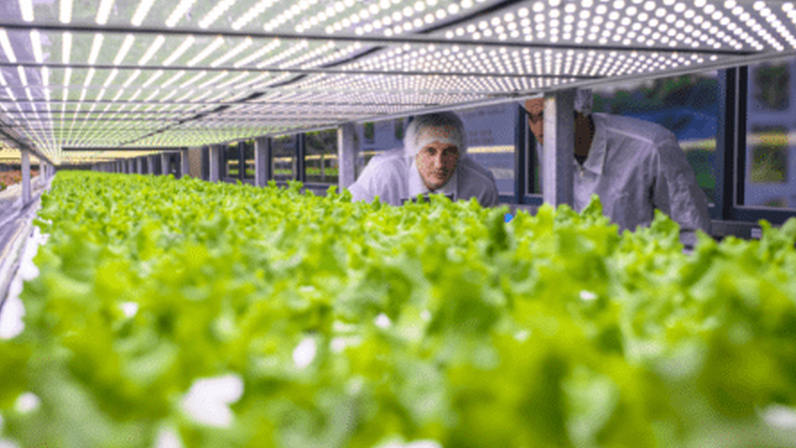Greenhouse Grower recently caught up with the team at DesignLights Consortium, a non-profit organization that provides decision makers with data and resources on quality lighting, controls, and systems to reduce energy, carbon, and light pollution, to get their insights on trends in LED lighting systems, and what growers need to know when making the switch.
What options are in the market for growers interested in LED lighting?
Today, hundreds of manufacturers offer LED-based horticultural lighting solutions that provide a variety of options for growers looking to grow just about anything. Almost all LED-based horticultural lighting options are dimmable, giving growers more flexibility to provide just the right amount of light to meet crop-specific daily light integral needs. Whether you’re a grower looking for something that is plug-and-play or looking for a more advanced solution that allows for dynamic spectral control or can integrate with other building systems, there is an LED-based solution that can meet your needs today and more coming to market every day. Visit the DLC’s Horticultural Qualified Products list to view the majority of LED-based products available on the market today and find the best option for you and your facility.
What factors should growers consider when switching from HPS to LED?
There are several factors that growers should consider when switching from HPS to LED, and they all relate back to making sure whatever you are growing is getting what it needs to grow effectively in the environment it will be growing in. We generally categorize these considerations into two groups: 1) Facility Parameters and 2) Plant Requirements. To successfully switch from HPS (or any other non-LED source) to LED growers must consider both of these.
Before switching, growers should define specific facility parameters and plant requirements and compare these designs. Baseline comparisons should confirm that the new design provides what crops need in the actual facility they will be used in. Once this baseline design comparison has been established growers can more easily and consistently compare things like cost of installation, expected energy use and cost to run, expected effects of the new lighting on HVAC, labor savings and more.
On the plant requirements side of things, regardless of what you’re growing, light is generally considered to be the driving factor for growth. So, a good starting point for any grower is to know what the target daily light integral (DLI) is for your crop(s) and ensure your lighting solution is capable of providing enough total light throughout a 24-hour period. It is important to remember that not every light fixture produces the same quality or quantity of light and all fixtures are not equally suitable for every application. Growers should consider DLI and other plant and application specific lighting requirements (including spectral content and photo-morphological impacts that lights will have on their crop development) to ensure the best design for their application-specific needs is implemented.
What are some common challenges/obstacles that growers face in converting lighting to LED? Please offer some solutions to these challenges as well.
The most common challenge growers face in converting lighting to LED is knowing how it will impact their overall process and what other changes need to be made to accommodate the new LED lighting.
Growers have successfully overcome this by using a small area of their overall grow facility to pilot/test new LEDs and actually see for themselves what the specific effects will be. This will help inform what changes to make throughout the rest of their process and can often enable deeper energy savings not just tied to using more efficient LEDs, e.g. HVAC savings due to reduced cooling needs to offset increased ambient temperature caused by wasted heat emitted from non-LED sources.
Please discuss any recent research DLC has conducted and your findings.
The DLC recently conducted a horticultural lighting market assessment focused on food, cannabis, and floriculture production across the U.S. and Canada. One key finding from this assessment is that LEDs are becoming the go-to choice for growers with more than 50% of all money spent on lighting by growers being spent on LEDs. That being said, approximately 90% of all lit indoor horticulture spaces are still not using LED, so, LED is still far from the baseline and energy efficiency incentives should stay in place for quite a while.
The DLC has assembled a Hort Lighting Controls Working Group consisting of nine members across the industry to better understand the potential for controls to enable additional energy savings beyond just switching to LEDs. While there is still much more work to be done, there is generally consensus that greenhouse growers are able to save 20% to 50% more energy by adopting controls that support DLI tracking when they install their new LEDs. There are many ways DLI tracking can be achieved and even more ways that manufacturers or growers generally talk about this capability, but the main concept across all of them is that the new lights are able to be controlled so that their output supplements available sunlight and provides the exact DLI needed for the crop (as defined by the grower). This allows plants to get exactly what they need, while enabling growers use less energy to produce the same crop, which ultimately saves growers money.

